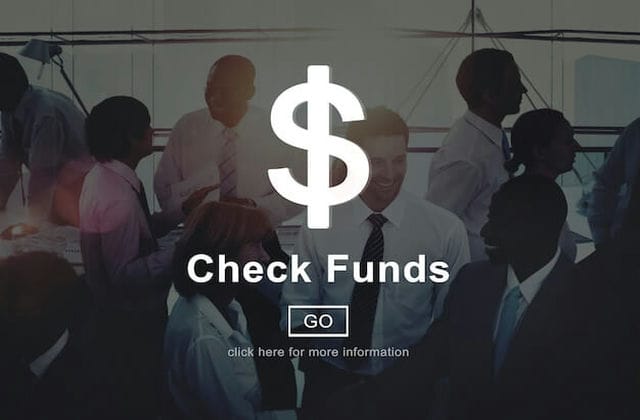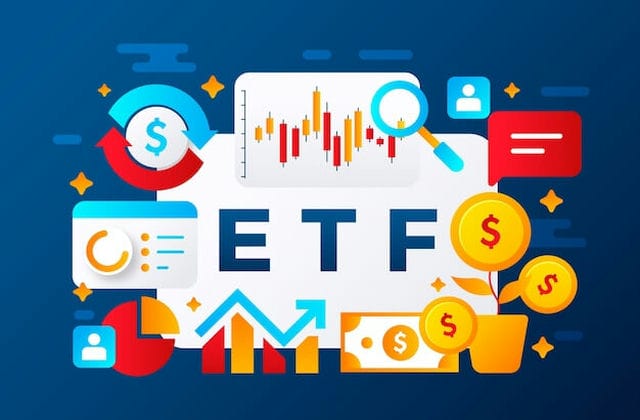ETF Fund
The exchange traded open-end index fund, also known as Exchange Traded Funds ("ETF" for short), is an open-end fund that is listed on the exchange and has variable fund shares.
Transactional open-ended index fund is a special type of open-ended fund. It combines the operating characteristics of closed-end fund and open-end fund. Investors can not only apply for or redeem fund shares from fund management companies, but also buy and sell ETF shares in the secondary market at market prices like closed-end funds. However, The subscription and redemption must be in exchange for a package of shares in the Fund or in exchange for a package of shares in the Fund. Due to the simultaneous existence of securities market trading and subscription and redemption mechanisms, investors can carry out arbitrage transactions when there is a difference between the ETF market price and the fund unit net value. The existence of arbitrage mechanism makes ETF avoid the discount problem that exists universally in closed-end funds.
According to the different investment methods, ETFs can be divided into index funds and actively managed funds. The vast majority of ETFs are index funds. The ETF index fund represents the ownership of a package of stocks. It refers to an index fund traded on a stock exchange like a stock. Its trading price and net value trend of fund units are basically consistent with the index tracked. Therefore, when an investor buys or sells an ETF, it is equivalent to buying or selling the index it tracks, and can obtain basically the same returns as the index. It usually adopts a completely passive management method with the goal of fitting an index, which has the characteristics of both stocks and index funds.

ETF Fund Advantages
Diversify investment and reduce investment risk
The passive portfolio usually contains more subject matter than the general active portfolio. The increase of the subject matter can reduce the impact of the fluctuation of a single subject matter on the overall portfolio. At the same time, the fluctuation of the portfolio can be reduced by taking advantage of the different impact of different subjects on market risk.
It has the characteristics of both stocks and index funds
(1) For ordinary investors, ETFs can also be traded in the secondary market of the exchange after being split into smaller trading units, just like ordinary stocks.
(2) When you earn an index, you will make money. Investors no longer need to study stocks and worry about stepping on landmine stocks;

Combining the advantages of closed-end and open-end funds
Like the closed-end funds we are familiar with, ETFs can be traded on exchanges in the form of small "fund units". Similar to open-ended funds, ETFs allow investors to continuously subscribe and redeem, but when ETFs redeem, investors get a package of stocks instead of cash. At the same time, they are required to reach a certain scale before subscription and redemption.
Compared with closed-end funds, ETFs are both listed on the exchange, just like stocks, and can be traded at any time of the day. The differences are: ① ETFs are more transparent. As investors can continuously subscribe/redeem, the Fund Manager is required to speed up the frequency of publishing the net value and investment portfolio. ② Due to the existence of a continuous subscription/redemption mechanism, there will not be too much discount/premium on the net value and market price of ETFs in theory.
Compared with open-end funds, ETF funds have two advantages: first, ETF is listed on the exchange and can be traded at any time in a day, which is convenient for trading. Generally, open-end funds can only be opened once a day, and investors can only have one trading opportunity every day (i.e. subscription and redemption); Second, when ETF redeems, it delivers a package of stocks without retaining cash, which is convenient for the manager to operate and can improve the management efficiency of fund investment. Open ended funds often need to retain a certain amount of cash for redemption. When open-end fund investors redeem fund shares, they often force fund managers to constantly adjust their portfolios. The resulting tax and loss of some investment opportunities are borne by long-term investors who do not require redemption. This mechanism can ensure that when some investors in the ETF ask for redemption, it will have little impact on the long-term investors in the ETF (because the redemption is stock).
Low transaction cost
Indexing investment often has the characteristics of low management fees and low transaction costs. Compared with other funds, index investment is not for the purpose of outperforming the index. Managers will only adjust their portfolios according to changes in the index composition, without paying investment research and analysis fees, so they can charge lower management fees; On the other hand, index investment tends to hold and buy securities for a long time, which is different from active management, which has to pay higher transaction costs because of the high turnover rate of active trading. Index investment does not actively adjust the portfolio, so the turnover rate is low, and the transaction cost naturally decreases.
Investors can arbitrage on the same day
For investors of ordinary open-end index funds, intraday gains are meaningless. The redemption price can only be calculated based on the closing price. The characteristics of ETFs can help investors seize the opportunity of intraday gains. Since the exchange displays IOPV (net value valuation) every 15 seconds, this IOPV reflects the change of fund net value caused by the rise and fall of the index in real time. The secondary market price of ETF changes with the change of IOPV. Therefore, investors can timely sell ETF in the secondary market when the index rises in the intraday to obtain the gains brought by the intraday rise of the index.

High transparency
ETF adopts passive management, and completely copies the constituent stocks of the index as the fund portfolio and
The rate of return on investment and the fund's shareholding are quite transparent. It is easier for investors to understand the characteristics of the investment portfolio, fully grasp the situation of the investment portfolio, and make appropriate expectations. In addition, the index value and the estimated net value of the fund are updated every 15 seconds for investors' reference, so that investors can keep track of their price changes at any time and buy and sell at a price close to the net value of the fund at any time. Neither closed-end fund nor open-end fund can provide the convenience and transparency of ETF trading.
Increase market hedging tools
Because ETF commodities can be regarded as a stock index in concept, in line with the commodity characteristics of ETF itself, if institutional investors have stocks in their hands, but look bad at the performance of the stock market, they can use the securities lending method to sell ETFs for reverse operation, so as to reduce the amount of spot losses on their hands. For the overall market, the birth of ETF has made financial investment channels more diversified, and also increased the short channel of the market. For example, in the past, institutional investors could only avoid risks by reducing their positions when operating funds. Although there were more short channels after the introduction of futures, investors must also face the problems of monthly position settlement, transaction cost and price difference when using futures as long-term hedging tools. Using ETF as a hedging tool can not only reduce the risk of stock positions, but also do not need to sell stocks in the spot market, thus providing investors with more diversified choices.




























